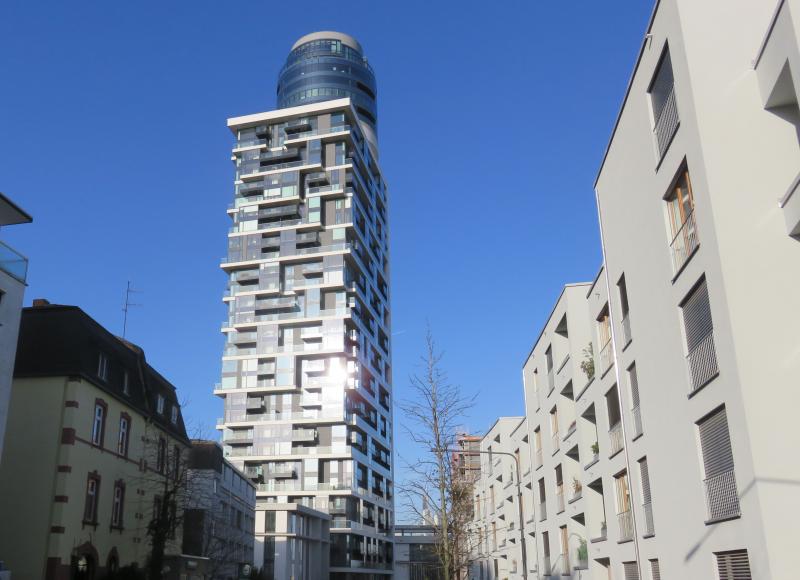Student Housing: Looking for Fresh Concepts
Student Housing: Looking for Fresh Concepts
In the “2019 Student Housing” market survey that we compiled for Union Investment, we mapped the potential of 65 cities including four European metropolises. Few people could have expected Münster to emerge as the top performer. This goes to show that a pure Class A strategy falls short of the mark. What is principally lacking are options in the mid-price segment.
For the latest city scoring, we investigated eight supply-side and ten demand-side indicators in the student housing segment. Münster takes the lead, ahead of Cologne, Stuttgart, Karlsruhe and Hanover, whereas Trier brings up the rear, trailing Kaiserslautern, Bamberg, Greifswald and Chemnitz. The analysis also included the European metropolises Dublin, Amsterdam, Paris and Vienna, which positioned themselves in the upper third of the ranking.
Subject of our survey were the parameters for the student housing segment in those German cities that showed an enrolment of at least 10,000 students for the 2017/2018 winter semester. Geographically speaking, the survey covers 61 cities in Germany that collectively add up to a population total of more than 22,8 million residents, 2.2 million students and around 262,000 existing student housing units. Moreover, the survey integrates the European metropolises Amsterdam, Dublin, Paris and Vienna as benchmark for comparisons on the European level.
The findings show where the prerequisites for property development and investments are most favourable and, inversely, where the supply side is already glutted with—existing or planned—accommodation. However, the findings of the market survey mean neither that investments in cities that were given a more or less negative rating in this market survey should be ruled out altogether nor that further investments in favourably rated cities are without any kind of exposure. Now, as then, every investment decision calls for thorough market research.
The Key Findings
1. Student housing has evolved into a distinct asset class
Within the overall German asset class of “micro living,” student apartments play a major role because of their large transaction volume (c. 305 million euros in 2018), their large stock and pipeline of residential units and the demand generated by around 2.87 million students enrolled in the 2018/2019 winter semester. The insight matches the outcome of the “Study.EU Country Ranking 2018,” which suggests that Germany has once again emerged from a global comparison as the most attractive country for international students.
2. The market share of private providers, currently at just 30 %, is set to grow
Today, around 262,000 student housing units are on record in Germany’s 61 largest campus towns. Well over 70 % thereof are provided by public sector sponsors (including student services organisations). Their share will shrink in the medium term because about 76 % of the planned accommodation units (or roughly 32,000 in absolute figures) will be raised by private-sector providers.
3. Münster is the overall winner of the scoring, while Class A cities and European metropolises also offer excellent parameters
The analysis revealed that—in addition to Germany’s “Big Seven” cities and the four European metropolises Amsterdam, Dublin, Paris and Vienna—the cities of Münster, Karlsruhe, Hanover, Ulm, Braunschweig, Darmstadt and Koblenz have excellent investment outlooks in this asset class.
All of Germany’s seven Class A cities and the four European metropolises mentioned made the top 20 in the ranking. So, it principally makes senses that many market players focus on these locations, yet limiting your strategy exclusively to Class A cities would mean that you are missing out on the opportunities that specifically the cities Münster, Karlsruhe, Hanover, Ulm, Braunschweig, Darmstadt or Koblenz present.
4. Private-sector student apartments have an estimated market potential of 67,500 units
The market potential for additional student apartments that are listed for a monthly all-in rent of 500 euros or more is appraised by the survey authors at around 67,500 units for all of the 61 German cities covered. However, the market in this price range is already glutted in some of the cities.
According to the survey, there is principally ample potential in the medium-price segment (400 to 500 euros/month “all in”), because virtually no provider adequately covers this bandwidth in the analysed cities and locations with offers that are supposed to generate profits. With this in mind, the market survey is not least intended to encourage market players to think about alternative, simple residential formats, perhaps involving the shared use of kitchens or even of bathrooms, and to request relief from qualifications attached to the necessary building permits.
Conclusion: An Attractive Investment Opportunity as Long as You Factor in the End of the Boom Cycle
In the ongoing market cycle, German and European university cities offer attractive investment opportunities in the student housing segment. Investors need to bear in mind, however, that the student housing asset class has exclusively prospered during a boom cycle so far. The thing is that real estate markets follow cycles, and that rental upside expectations should be reduced with a view to the decreasing affordability of rental housing; because price-to-rent multiples have been exploited to capacity, and further appreciation will no longer match the dynamic seen in previous years.
Note: For more information and contact details to request the full-length survey (German), go to the homepage of Union Investment.
Contact person: Felix Embacher, Head of Division for Master Planning and Special Housing Types at bulwiengesa, embacher [at] bulwiengesa.de






